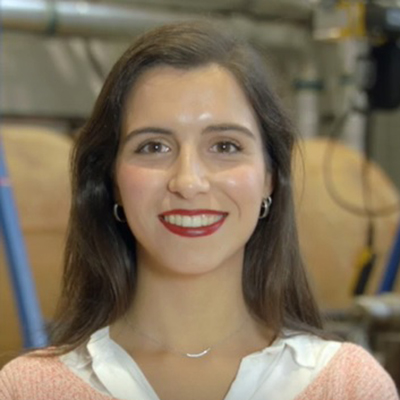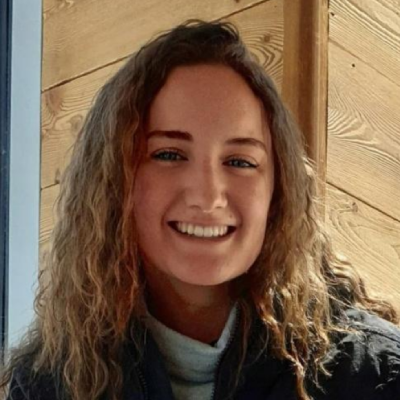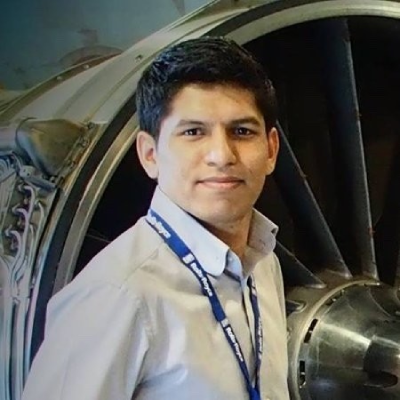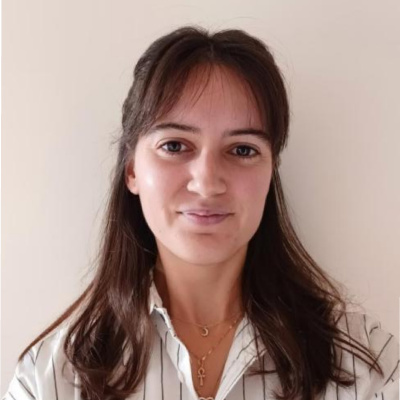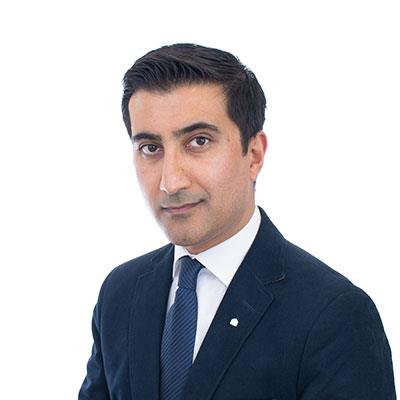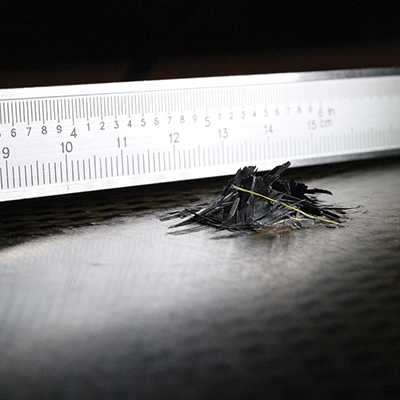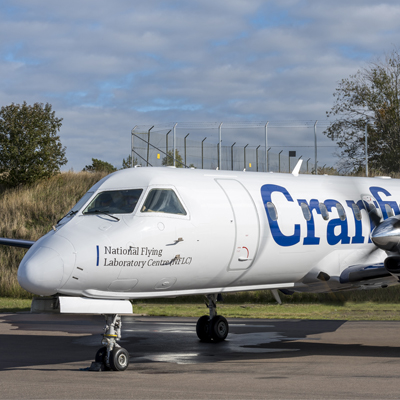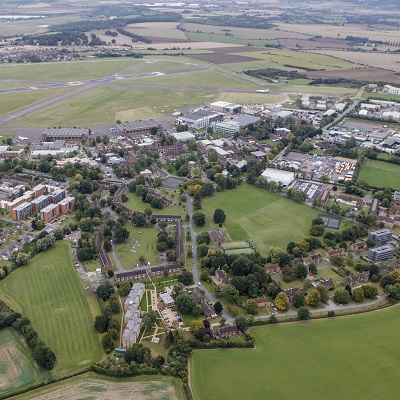A scholarship of 30% fee discount—secure your spot now
We have a limited number of Scholarships available for the first ten offer holders for the Advanced Lightweight and Composite Structures MSc course who meet their deposit condition, either by payment or by providing a suitable letter of sponsorship. These scholarships offer a 30% fee discount to offer holders holding an undergraduate degree in a relevant subject.
Overview
- Start dateOctober
- DurationMSc: one year
- DeliveryTaught modules 40%, group project 20%, individual research project 40%
- QualificationMSc
- Study typeFull-time
- CampusCranfield campus
Who is it for?
The MSc in Advanced Lightweight and Composite Structures is suitable for graduates with engineering, science, applied science or related degrees, who are keen to pursue careers as design engineers, stress engineers, research and development engineers, numerical code developers, consultants, and academic researchers.
Our students typically hold first degrees or equivalent in mathematics, physics, computing or an engineering discipline. We also welcome applications from candidates from other disciplines and mature applicants with alternative qualifications.
Why this course?
This course will equip you with the knowledge and skills required by leading employers in aerospace, automotive, motorsport, marine and renewable energy industries to design and develop next generation environmental-friendly and structural-efficient advanced lightweight materials and components.
Understanding how advanced lightweight metallic and composite materials and structures perform over their life cycles under static and dynamic loading, including crash and bird strike, requires expertise in a range of technical areas. As new simulation and material technologies emerge, there is a strong demand for talented employees with a sound understanding in structural analysis, together with competent technical skills in numerical simulation.
Combined with Cranfield University’s long-standing track record for delivering high-quality Masters' programmes in both advanced materials and structures, the MSc in Advanced Lightweight and Composite Structures equips students with the knowledge and skills in the design and analysis of advanced lightweight metallic and composite materials and structures to solve a wide range of industrial challenges for weight saving, sustainability and carbon reduction without compromising structural reliability and safety.
Our course receives strong support from the aerospace and automotive industries including Airbus, Rolls-Royce, BAE Systems, and Jaguar Land Rover. There is a strong emphasis on applying knowledge in the industrial environment with the group and individual projects commonly sponsored by industry, which gives you highly relevant context to your studies and practical work and prepares you to successfully launch your career.
Explore the unique range of facilities available to you as a student on this course.
Cranfield University has definitely fulfilled my expectations with regards to studying abroad. Considering the nature of my field of knowledge in structures and impact damage, the Cranfield Impact Centre was the most fascinating and impressive one for me, embodying an FIA approved test house for F1 crash tests.
My degree played an important role in helping me gain my current role at Scuderi Ferrari F1. It was key on my CV and highly rated by composite-oriented workers from companies that I’ve been in contact with. In particular, the technical knowledge that I've learnt helps me everyday in my current role. As well as the professional approach that I experienced working on my group project and individual research project that has taught me how to deal with real engineering problems.
My experience at Cranfield has been extremely positive, exceeding my expectations and, although the previous year has been a tough time in the Uk and worldwide, I strongly believe the teaching team managed to deliver a profound and enriching learning experience to me and to my classmates, even during the distant learning weeks. In particular, I delivered an interesting group design project working with Airbus on advanced Finite Element simulation techniques for aircraft design, which permitted me to apply the knowledge and competencies I acquired during classes and workshops in a real work environment. Moreover, at the end of my study period and during the summer I worked on an individual research project, under the supervision of Dr Dayyani, focused on the design and analysis of novel mechanical metamaterials, which resulted in my first ever publication on a top scientific journal.
About a decade ago I successfully launched my career in the Aero-industry, after completing a master’s at Cranfield University. As a Cranfield alumnus, I recognised an opportunity during the pandemic to study lightweight Composite Structures and Impact analysis. This is an ideal leap forward in my career as a structural analyst. Cranfield University is in a unique position as being a postgraduate only University with a blend of professionals and recent graduates. The University's industry-renowned specialised research facilities are at par, giving us exposure to real-world problem-solving testing tools. I enjoyed the experience of Cranfield’s impact centre (CIC) for the crash analysis, which gave us hands-on experience in impact testing. I found the course very exciting because it gave me access to all the necessary knowledge, analysis tools such as Abaqus used in industry, lessons from experts in the field, and a vast number of resources in the on-campus library. Cranfield’s strong industry links and alumni network is the major platform with world-class facilities for higher technology readiness levels; enabling cutting-edge technological research that helps you launch a professional career.
Since graduating Cranfield University, I have been fortunate to move straight into a full time role in Formula 1, working for Red Bull Racing as a Structures Analyst. This role was directly linked to my course’s fundamental principal of structure design.
It’s fair to say that this opportunity in F1 would never have been possible without the great recognition Cranfield University has in the industry and the unique nature of the Advanced Lightweight and Composite Structures MSc. The specific topics we covered and focused on were crashworthiness and lightweight composite structure design.
What I enjoyed the most about the course was the focused environment. The location plays a huge role in having the correct climate to learn during the condensed 1 year masters course. In addition, the diverse community at Cranfield University has left me with long lasting friends from across the globe. Relating more to the course, the enhanced composites lab and Cranfield Impact Centre were amazing, and I had the opportunity to make the most of them during my course.
Even before graduating from Cranfield University, I was accepted as a Marie Skłodowska - Curie PhD student, investigating the X-ray imaging and scattering techniques for pultruded carbon fibre composites for wind turbine blades. Attending a MSc in ALCS provided me with the essential, advanced and state-of-the-art thorough background of Composite Materials and Lightweight Structures, including the related software, while the projects of the course equipped me with highly competitive problem solving skills. Most importantly, the people that constitute this MSc taught me invaluable life lessons and were always there to give me their support, like when I was needing advice for the PhD. The most enjoyable part of being a student in Cranfield was the opportunity to work hard, test my limits and gain a thorough and specialized background on my area of interest, while enjoying the life in the University, attending various activities and building friendships that I am sure will last.
Cranfield's Advanced Lightweight and Composite Structures Master's program wasn't just an academic chapter; it was the launchpad for my career trajectory. Surrounded by brilliant minds and hands-on experiences, I sculpted my passion into expertise that now propels my professional journey at Airbus. During my year in Cranfield, I learnt not only theoretical but also practical knowledge that I apply every day in my job.
For example, as part of my thesis I was able to perform FE analysis as well as manufacturing and testing of composite-aluminium bonded joints, giving me an overview of the whole process that any company follows.
I highly recommend the ACLS Master’s programme to anyone keen on materials and lightweight structures, no matter the sector, as the career options are wide open.
Informed by industry
Established in 2003, this course has been supported by industries through student projects, specialist lectures and more importantly, by them employing our graduates.
The MSc in Advanced Lightweight and Composite Structures is advised by an Industrial Advisory Panel comprising senior technical specialists from aerospace, automotive, and associated sectors. This maintains course relevance and ensures that graduates are equipped with the skills and knowledge required by major employers
The Industry Advisory Panel includes representatives from:
- Airbus,
- BAE Systems,
- Cranfield Impact Centre (FIA approved centre for crashing test of F1 vehicles),
- Jaguar Land Rover,
- Maeve Aerospace,
- Rolls-Royce Plc.
Course details
You will complete eight compulsory modules.
The course employs a wide range of teaching methods designed to create a demanding and varied learning environment including structured lecture programmes, tutorials, case studies, hands-on computing, individual projects and guest lectures.
Course delivery
Taught modules 40%, group project 20%, individual research project 40%
Group project
The group project aims to address one of the greatest challenges graduates face, which is the lack of experience in dealing with the complexities of working within a design team. This part of the course takes place from March to May. It is student-led and consolidates the taught material which develops both technical and project management skills on an industrially relevant project.
On successful completion of this module a student should be able to:
- Set objectives, plan and manage projects;
- Evaluate a project brief set by a client;
- Develop a set of project objectives appropriate to the client’s brief;
- Plan and execute a work programme with reference to key project management processes (e.g. time management, risk management, contingency planning, resource allocation).
The projects are designed to integrate knowledge, understanding and skills from the taught modules in a real-life situation. This module is typically delivered through collaboration with an industrial sponsor.
Project examples:
2017/18, sponsored by LCF Conversions Ltd
Design of a 9g safety barrier for a Boeing 777-200 cargo airplane converted by LCF conversions.
2020/21, sponsored by Royal Academy of Engineering & Thailand Metal and Material Research Centre
Development of aluminium crash box for crashworthiness performance.
Individual project
Individual research project topics can vary greatly, allowing you to develop your own areas of interest. It is common for our industrial partners to put forward real-life practical problems or areas of development as potential research topics. This section of the course takes place from April to August.
The research projects are devised to provide a research challenge allowing you to define the problem, perform appropriate analysis and research, draw conclusions from your work, communicate your findings and conclusions and enhance your skills and expertise. This will enable you to plan a research project, demonstrate a thorough understanding of your chosen topic area, including a critical evaluation of existing work, design appropriate analysis, plan an independent learning ability and manage a well-argued thesis report demonstrating original thought.
Modules
Keeping our courses up-to-date and current requires constant innovation and change. The modules we offer reflect the needs of business and industry and the research interests of our staff and, as a result, may change or be withdrawn due to research developments, legislation changes or for a variety of other reasons. Changes may also be designed to improve the student learning experience or to respond to feedback from students, external examiners, accreditation bodies and industrial advisory panels.
To give you a taster, we have listed the compulsory and elective (where applicable) modules which are currently affiliated with this course. All modules are indicative only, and may be subject to change for your year of entry.
Course modules
Compulsory modules
All the modules in the following list need to be taken as part of this course.
Introduction to Continuum Mechanics
| Aim |
This module provides you with a fundamental knowledge of Continuum Mechanics. The classical theories, concepts, and the relevant mathematics are introduced. The module is aimed at giving you a good understanding of the motion and deformation process of solids and structures, which is essential to the design and analysis of engineering structures |
|---|---|
| Syllabus |
|
| Intended learning outcomes |
On successful completion of this module you should be able to: • Practice all laws of continuum mechanics in terms of indicial notation and tensor calculus. • Analyse kinematics of a continuum and to drive its deformation equations. • Analyse the response of structural components to complex stresses. • Understand and apply the basic principles of continuum physics. • Practice analytical methods to the design and analysis of structural components subjected to different material properties. |
Advanced Composite Analysis and Impact
| Aim |
To develop an understanding of the composite materials used in engineering structures. |
|---|---|
| Syllabus |
• FRP constituents: fibres and resins. • Micromechanics of a lamina. • Analysis of an individual ply. • Macro-mechanics of a laminate; stiffness, strength and analysis techniques. • Residual stresses due to temperature effects and moisture. • Stress distribution around holes in laminates. • Test methods; determination of elastic constants, static strengths, fibre volume fractions and void content. • Structural Design and Manufacturing considerations. |
| Intended learning outcomes |
On successful completion of this module you should be able to: • Design advanced composite structures based on theoretical approach. • Evaluate stresses and deformations of composite structures under various loading conditions. • Assess the failure modes of composite structures. • Design laminated structures based on stiffness and failure criteria. |
Thin-walled Structures
| Aim |
This module provides an introduction to you on the fundamental knowledge and understanding for the design and analysis of lightweight structures. Classical stress analysis techniques to obtain closed form solutions to thin-walled structures under torsion, shear, and bending will be introduced. The module will develop your understanding upon which advanced lightweight structures are designed and analysed in transport industries. |
|---|---|
| Syllabus |
• Basic theories of structural mechanics. |
| Intended learning outcomes |
On successful completion of this module you should be able to: 1. Apply thin-walled structure analysis methods for solving complex problems in engineering and assess their limitations 2. Understand the design process and methodology of thin-walled structures and apply and adapt them in unfamiliar situations 3. Develop a thorough understanding of current practice and its limitations, and some appreciation of likely developments of thin-walled structure design and analysis. |
Finite Element Methods
| Module Leader |
|
|---|---|
| Aim |
The module is aimed at giving potential Finite Element users basic understanding of the background of the method. The objective is to introduce users to the terminology, basic numerical and mathematical aspects of the method. This should help you to avoid some of the more common and important user errors, many of which stem from a "black box" approach to this technique. Some basic guidelines are also given on how to approach the modelling of structures using the Finite Element Method. |
| Syllabus |
• Introduction to the Direct Stiffness (Displacement) Method. • Development of Truss, Bar Element Equations in 2D and 3D. • Development of Beam and Frame Element Equations (2D and 3D). • Development of the Plane Stress element Equations (Constant and Linear Strain). • Accuracy considerations: higher order elements, Isoparametric elements. • The role of numerical integration and methods used in FE. • Practical Considerations in Modelling; Interpreting Results. |
| Intended learning outcomes |
On successful completion of this module you should be able to: • Analyse and practice the theory of finite element models for structural and continuum elements. • Design and solve mathematical finite element models. • Interpret results of the FE simulations and analyse error levels. • Create and solve mathematical finite element methods. • Critically evaluate the constraints and implications imposed by the finite element method. |
Materials Characterisation and Failure Simulations
| Aim |
This module will provide the principals involved in characterising material properties of composites and metals suitable for input to numerical simulations and to examine the challenges, significances and limitations of available experimental processes in extracting reliable, repeatable and relevant material properties. The effect of these properties is then investigated through practical simulation exercises to further enhance the understanding of material models and how to apply them correctly. |
|---|---|
| Syllabus |
• Overview of different types of material testing (quasi-static, fatigue, environmental). • Overview of different test machines available (functionality, capabilities, etc). • Material characterisation procedures (tensile, compression, shear, temp loading, fracture toughness). • Instrumentation required. • Specimen/coupon preparation. • Material characterisation of metals/composites. • Numerical materials models and their requirements. • Failure simulation of metal/composite materials in finite element implicit analysis |
| Intended learning outcomes |
On successful completion of this module you should be able to: 1. Plan required equipment for material characterisation and correctly evaluate experimental test data. 2. Assess the relevance of the material parameters for inclusion in a numerical material model. 3. Be able to judge accuracy, practicality, significance and limitations of the experimental procedures considered. 4. Construct finite element models to simulate fibre reinforce composite and ductile metal failure in static implicit analysis. 5. Judge the parameter and material inputs and their significance to the simulation results. |
Structural Stability
| Module Leader |
|
|---|---|
| Aim |
To provide you with a fundamental understanding of the buckling of thin walled structures and the ability to calculate the buckling load of a component. |
| Syllabus |
|
| Intended learning outcomes |
On successful completion of this module you should be able to:
|
Advanced Simulation for Impact
| Aim |
The aim of the module will be to provide you with a general understanding, advantages and limitations of available numerical methods for analysis of solids and structures. Covering theory behind strain rate dependent materials, explicit non-linear finite element solvers, dynamic plasticity and meshless modelling techniques in finite element framework. |
|---|---|
| Syllabus |
• Solution procedures for static analyses and dynamic analyses, formulation and implementation. • Failure modelling including cohesive zone methods and strength-based failure criterion for fibre reinforced polymer composites. • Failure modelling and strain-based failure criterion for ductile metals • Strain rate and temperature dependent models. • Examples of smoothed particle hydrodynamics and meshless methods. • Practical applications: such as dynamic structural buckling, failure and ballistic impact. |
| Intended learning outcomes |
On successful completion of this module you should be able to: 1. Demonstrate an understanding of the basic underlying theory of explicit analysis codes and the numerical implementation of the theory. 2. Evaluate the strengths and weaknesses of the numerical methods available to an analyst. 3. Construct correct damage and failure numerical models to assess common structural failure problems in explicit finite element. 4. Analyse and evaluate impact problems using meshless numerical modelling method. 5. Assess the effect of strain rate and temperature on material constitutive response and strength. |
Crashworthiness
| Aim |
|
|---|---|
| Syllabus |
Local collapse of structures: Collapse of thick walled sections: axial, bending and torsion. Collapse of thin-walled sections, energy absorption and failure modes. Global collapse of structures: Virtual work approach to calculation, identification of collapse mechanism, geometric and large deformation effects. Crash energy management: Modes of energy absorption, collapse mechanism control, dynamic effects. Crashworthiness design features: Context of structural design in overall crashworthiness, relation to other design aspects. Issues specific to individual applications, including aircraft, cars, trains. Occupant protection: Injury mechanisms, crash dummies and injury criteria. Test and analysis methods: Experimental crash tests, hybrid analysis methods. |
| Intended learning outcomes |
On successful completion of this module you should be able to:
|
Teaching team
The course will be delivered by Cranfield University's academic staff within the Centre for Aeronautics. The course team work closely with business and have extensive academic and industrial experience. Knowledge gained through working with our clients is continually fed back into the teaching programme, to ensure that students benefit from the very latest knowledge and techniques affecting industry. The course team consist of the following academic staff:
Accreditation
The MSc in Advanced Lightweight and Composite Structures is accredited by Royal Aeronautical Society (RAeS) and the Institution of Mechanical Engineers on behalf of the Engineering Council as meeting the requirements for further learning for registration as a Chartered Engineer (CEng). Candidates must hold a CEng accredited BEng/BSc (Hons) undergraduate first degree to show that they have satisfied the educational base for CEng registration.
Your career
Industry-driven research makes our graduates some of the most desirable in the world for recruitment by companies competing in the structural engineering sector, which forms a large worldwide industry.
Students who enrol on the MSc in Advanced Lightweight and Composite Structures come from a variety of backgrounds. Many have specific careers in mind, such as working in automotive or aerospace disciplines (structural design or crash protection), materials development for defence applications, or working in the field of numerical code developments/consultancy. Others decide to continue their education through PhD studies available within the University.
Jobs that our students have gone into include:
| Wing Structure Repair Engineer |
| Mechanical Integrity Engineer |
| Composite Design Engineer |
| Project Engineer |
| Junior Structures Analyst |
| Structures Analysis Engineer |
| Research Fellow |
Companies that have recruited graduates of this course include:
| Airbus |
| Rolls-Royce Plc. |
| Jaguar Land Rover |
| Scuderia Ferrari F1 |
| McLaren |
| Red Bull Racing and Red Bull Technology |
| PLD Space |
Cranfield’s Career Service is dedicated to helping you meet your career aspirations. You will have access to career coaching and advice, CV development, interview practice, access to hundreds of available jobs via our Symplicity platform and opportunities to meet recruiting employers at our careers fairs. Our strong reputation and links with potential employers provide you with outstanding opportunities to secure interesting jobs and develop successful careers. Support continues after graduation and as a Cranfield alumnus, you have free life-long access to a range of career resources to help you continue your education and enhance your career.
How to apply
Click on the ‘Apply now’ button below to start your online application.
See our Application guide for information on our application process and entry requirements.
